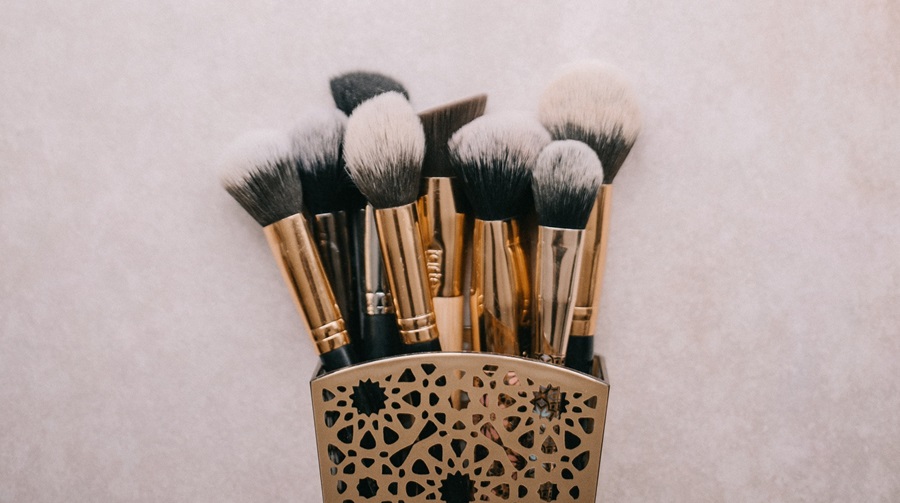It’s been a particularly tough time for the beauty industry of late. Categories such as cosmetics are amongst some of the most impacted during lockdown, whilst other FMCG categories – like healthcare and alcohol, to nobody’s real surprise – performed relatively well.
With restricted movement, enforced social distancing and working from home, our in-home consumption of alcohol may have increased, but our purchases of cosmetics and fragrance have sharply decreased. The cosmetics category declined by almost 50% during the peak of the lockdown (4 weeks ending 5 April compared to previous year).
Using makeup less
Our usage data tells a similar story. With fewer trips to work and not seeing friends, the times when we most commonly apply makeup, we saw 60% fewer occasions in the category than usual across the nation (23rd March 2020 vs the average month in the year before). The movement to working from home had a significant impact our personal care routines – resulting in over 150m weekly occasions lost compared to the average month last year. It seems consumers still weren’t glamming up despite moving more to virtual meetings, Zoom calls and house parties.
Reassuringly, we still did the basics: we still washed and we still brushed our teeth. However, we paid little attention to the finishing touches such as using makeup, smelling good, or styling our hair.
Moving online
How and where we are shopping for the category has also changed as a result of coronavirus: online growth has accelerated, with sales in cosmetics online growing by 169% in the last month, whilst the High Street retailers continue to struggle.
While the compulsory face mask rule hasn’t helped to return shoppers to the High Street (numbers are down 1.1m vs July last year), it has produced benefits for some makeup categories. With shoppers paying more attention to eye makeup, this has been the fastest growing subcategory, with over 600k shoppers returning to the category (July vs April). Lip is a category impacted negatively by women wearing masks, however, growing at half the rate (just 350k new shoppers).
Salons back in business
Another potential reason for the growth improvement in the eye cosmetics category is the situation with salons. Although beauty salons have now reopened, allowing customers to get waxes, nail treatments and tans, any treatment on the face is still off-limits.
However, the Prime Minister announced recently that face treatments can restart from 15 August, so we could see these trends dramatically change next month. In 2019, we saw 5.5 million consumers have their eye lashes or brows treated in salons – worth almost £300m – so this announcement will be welcome one for the industry.
Nailing it
Nail varnish was a category that performed comparatively well over lockdown, with consumers doing it themselves whilst beauty salons were closed. However, we have seen a big swing in performance – from +9.5% at the end of June to -13% in July – with nail bars proving particularly popular as shoppers return to the High Street. Almost 1 million more shoppers went to nail bars this month vs May. A quarter of this growth in shoppers came from females in the north of England. (Kantar Beauty Treatment Data for 4 weeks ending 26 July 2020)
Looking ahead
As the lockdown relaxes, with public places and pubs reopening, performance across beauty and cosmetics is starting to show signs of improving. The latest data to the end of July shows a decline of just 7%, with almost 1 million shoppers returning to the category vs April. There is still a way to go for the category to return to previous levels, with the market still down considerably compared to February, but there are positive signs.
But with more than 55% of UK consumers stating the pandemic has impacted their finances (Kantar COVID-19 Barometer, 30 July 2020), we expect to see discretionary categories such as beauty impacted by this in the longer term. Our routines are likely to simplify and the brands we use are likely to be cheaper. Already we’ve seen 54% of consumers already paying more attention to prices, according to the Barometer.
Looking back to 2008 and the last recession, we saw the number of times we used discretionary categories like makeup, fragrance and styling decline by 5% – a trend we are expecting to see again in 2020 as shoppers look to save money and go out less.
That said, during previous times of low consumer confidence, we have observed shoppers treating themselves to small affordable luxuries such as lipstick: leading to what is known as ‘the lipstick effect’.

